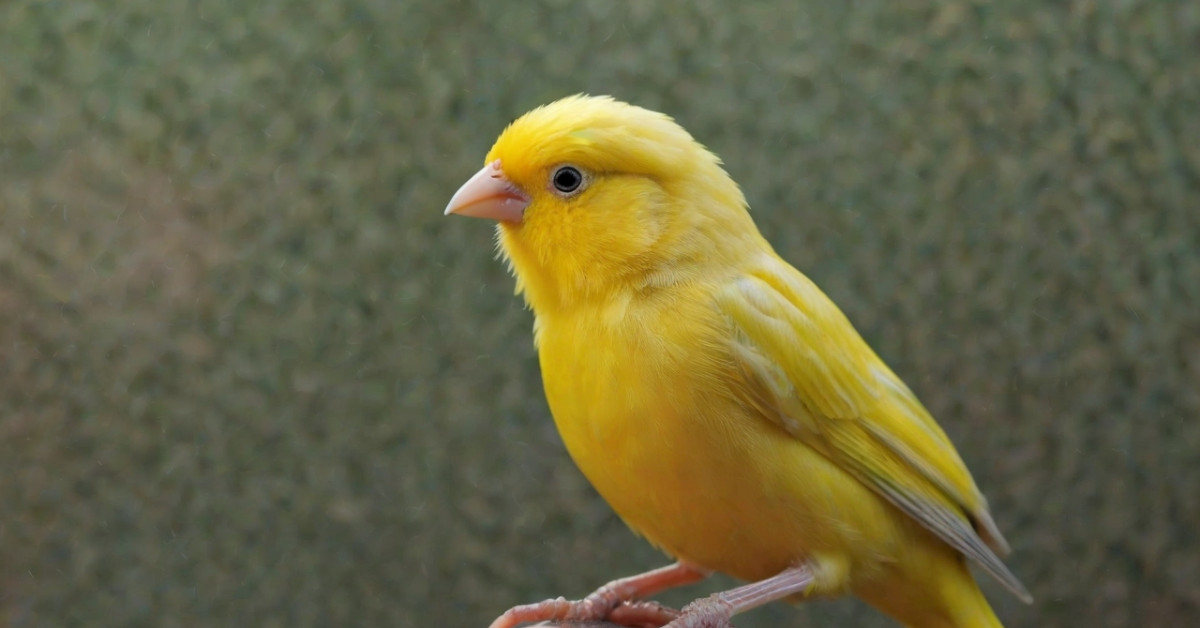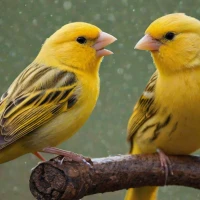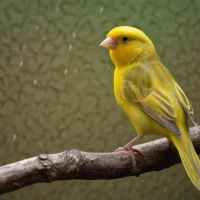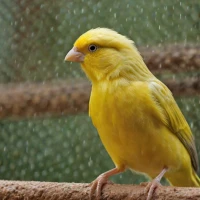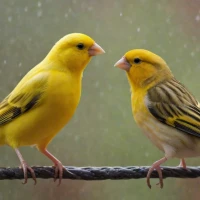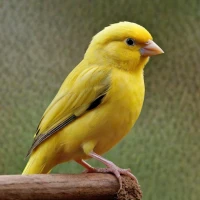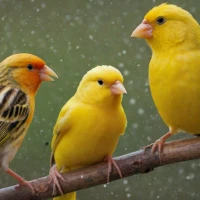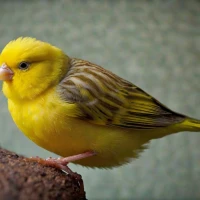My Journey Into the World of Rare Canary Birds
When I first stumbled upon my passion for canary birds, I was actually looking to adopt a cat! 😹 I remember it vividly. I was at a pet adoption event with my dear friend Emma, who’s obsessed with felines, but fate had other plans for me that day. As I wandered off, I came across a stunning display of singing canaries and their beauty entranced me right away. That unexpected encounter sparked my deep fascination with these charming little creatures.
The Enchanting World of Rare Canary Varieties
Canaries aren’t just the cheerful yellow birds we’ve all seen in cartoons. There’s an incredible diversity within the canary world, much of which remains relatively unknown to many bird enthusiasts. These rare varieties often possess unique characteristics, whether in the color of their plumage, their singing abilities, or their breeding backgrounds. I can tell you, it’s like entering a treasure trove of avian wonders!
The Lizard Canary
Firstly, let’s chat about the Lizard Canary, one of the oldest and rarest types. With a name like that, you’d think it looks reptilian, huh? But no, it’s due to the stunning scale-like pattern on their feathers. These lovelies, with their intricate gold or silver feathering and black stripe, are quite the sight. I remember the first time I saw one – I was at a bird expo in Birmingham (yeah, overseas trip!). The Lizard Canary immediately caught my eye among the rows of birds, and, boy, did it sing a captivating tune!
The Red Factor Canary
Next up, the Red Factor Canary! Imagine a bird so vividly colored that it looks like a tiny flammable ember. That’s the Red Factor for you. It’s one of the few canary varieties where color isn’t just a random genetic occurrence but is actually a result of selective breeding. These birds get their vivid color from the pigments in their diet – like flamingos, right? When I got my first Red Factor, I named him Blaze. Every morning, his vibrant appearance was a bright start to my day.
The Belgian Waterslager
Then there’s the Belgian Waterslager – a canary with a fascinating history and an even more delightful song. These birds were bred specifically to produce water-like sounds with their singing. Imagine a babbling brook accompanied by bird music – that’s what you get with the Waterslager. They have a somewhat understated look, but their melodious and varied tunes make them a prized possession among canary breeders.
The Spanish Timbrado
The Spanish Timbrado Canary is another unique breed. Their song is bright and metallic, and they have a robust physique, often showing off an energetic and lively demeanor. When my friend and fellow vet, Dr. Anderson, got his first Timbrado, he joked it was like having a pocket-sized concert every morning! 😊
The Gloster Canary
The Gloster Canary, distinct for the adorable “bowl cut” of feathers on top of its head, is used to many chuckles and smiles. They come in two versions – Consort and Corona, with the latter sporting the full-on feather hat. They’re relatively easy to care for and make fantastic pets for those new to bird-keeping. My mom couldn’t stop giggling at my Gloster Canary’s quirky look when I first introduced it to her.
Caring for Rare Canary Varieties
Each of these rare canary varieties has unique care requirements. Understanding and respecting these needs is crucial for any bird aficionado looking to maintain the health and well-being of their feathery friends.
Diet and Nutrition
Let’s dive into diet and nutrition first. Just like humans, canaries’ health heavily relies on what they consume. Typical commercial seed mixes often lack essential nutrients, so adding fresh fruits, vegetables, and specialized supplements is vital. For instance, to maintain the vivid red coloring of the Red Factor Canary, including foods like carrots and sweet potatoes is essential. It’s kinda like how bodybuilders have their protein shakes!
Housing and Space
Housing is another critical aspect. Canaries need spacious cages to flutter around and stretch their wings. Cramped conditions can lead to stress and health issues. They also love a bit of decoration – perches, swings, and mirrors can keep them entertained. It’s like setting up a cozy little apartment for them!
Ensure the cage is placed in a well-lit area, avoiding direct sunlight and drafts. I made the mistake once of placing a cage too close to an open window – boy, did my canary give me an earful until I took care of that mistake!
Cleanliness and Hygiene
Cleanliness can’t be stressed enough. A tidy environment helps prevent diseases. Regularly changing the cage lining, cleaning food and water dishes, and wiping down perches ensures a healthy living space. Using specific bird-safe cleaning products is essential to avoid exposing them to harmful chemicals.
Social Interaction
Canaries generally enjoy social interaction but in moderation. While they’re not as needy as some bird species, they do appreciate being talked to and enjoy hearing music or even listening to other canaries. I often play classical music for my canaries; it’s remarkable how they respond, sometimes even trying to mimic the tunes.
Healthcare and Regular Checks
Routine health checks, either at home or with an avian vet, are crucial. Look out for signs like changes in behavior, appetite, or droppings. Canaries are stoic creatures and may not show symptoms until they’re quite unwell. That’s why regular vet visits are non-negotiable! I remember one winter when my Canary, Whistle, seemed a tad off. A quick vet visit revealed he had a mild respiratory issue – which we managed to treat early due to my vigilance.
Unique Challenges of Rare Canaries
Caring for rare canary varieties can be challenging but rewarding. These birds require an extra level of attention and dedication. For instance, the Red Factor Canary’s diet maintenance can be demanding. Providing the right mix to keep their color vibrant while ensuring balanced nutrition requires careful planning.
Lizard Canaries, due to their unique feather pattern, need frequent grooming. Ensuring their feathers don’t become matted or damaged is vital, which sometimes means more hands-on care. Attending to such details, though time-consuming, becomes a labor of love when you see your canary thriving.
Thoughts and Reflections
In closing, taking care of rare canary varieties has been one of the most fulfilling aspects of my journey as a veterinary expert. The bond I’ve formed with my birds and the joy they bring into my life is immeasurable. Each chirp, every little wing flutter, reminds me why I embarked on this wonderful path. If you’ve ever considered adding these incredible birds to your life, my advice is simple: Dive in. The rewards far outweigh the effort.
Finally, thank you for taking the time to read about my experiences and insights into the world of rare canaries. Your journey into caring for these beautiful birds can be just as exciting and enriching. Remember, a house without a canary is like a garden without flowers! 🦜💛
Fly high and sing often!
